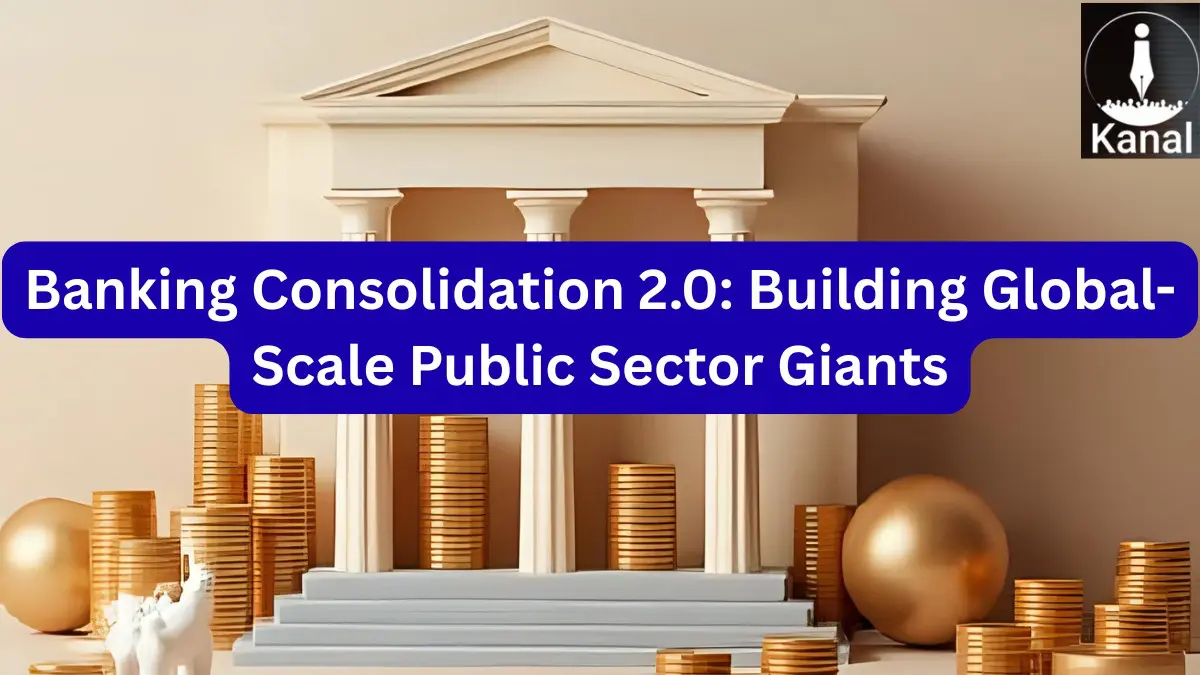New Delhi: The Indian government is gearing up for a second wave of consolidation among Public Sector Banks (PSBs) to create larger and more competitive financial institutions. This initiative aims to mobilize massive capital for infrastructure development amidst low private sector investment. Following a successful consolidation in 2020, policymakers now target the establishment of three to four significant banks to boost operational efficiency and drive economic growth.
- Consolidation of Public Sector Banks
- Infrastructure Financing Initiatives
- Current Challenges in Credit Growth
- The Path Forward for Indian Banks
- Key Facts about India’s Banking Sector Consolidation
- Bankerpedia’s Insight 💡
- How Does This Affect the Banking Ecosystem? 🏦
- Research References 📚
- Loved our Research? ❤️
Consolidation of Public Sector Banks
India’s banking sector is on the brink of a transformative change. Following the last major restructuring in 2020, which streamlined the number of state-run banks from 27 to 12, the government is now eyeing further consolidation. The objective is to establish at least three to four robust banks that can effectively compete on a global scale. Larger banks are anticipated to enhance operational efficiency, thereby promoting greater credit availability essential for driving infrastructure projects.
An official involved in the discussions emphasized the government’s openness to mergers that present synergies among banks. Achieving success in this new wave of consolidation may depend on a collaborative approach similar to what was employed in the previous round of mergers. Stakeholder consultations are likely to be crucial in ensuring that these newly formed entities can operate smoothly and meet their strategic objectives.
Infrastructure Financing Initiatives
A key focus of the upcoming PSB Summit will be on unlocking capital for crucial infrastructure projects. With a staggering requirement of $4.5 trillion in infrastructure investments by 2040, institutions like the National Bank for Financing Infrastructure and Development (NaBFID) and the India Infrastructure Finance Company (IIFCL) are set to be pivotal in aligning the strategies of banks to meet this goal.
“Building robust, well-capitalized banks is essential to collaborate with specialized financing bodies, thereby bridging the significant gap in infrastructure funding,” said an industry expert. The government is keen on positioning these larger financial entities as drivers of economic growth by ensuring they can support expansive infrastructure projects.
Current Challenges in Credit Growth
Despite the push for consolidation and reforms, the banking sector is facing notable challenges. As of July 2025, credit growth has moderated significantly, with non-food credit growth slowing to 9.9%, down from 13.7% a year earlier. Notably, lending to large industries has grown by less than 1% in this period, raising concerns about weak industrial demand.
Analysts attribute this slowdown to the nearly stagnant private capital expenditure, which has not picked up despite favorable macroeconomic indicators. “Growth in credit is essential for fostering a vibrant economic environment, and remedial action is required to stimulate private investment,” remarked a financial analyst from CareEdge Ratings.
The Path Forward for Indian Banks
The Indian government’s renewed emphasis on consolidation reflects its conviction that scale and strength are crucial for Public Sector Banks (PSBs) to thrive in the long run. Larger banks with robust balance sheets are expected to be more adept at managing risks, financing large-scale projects, and competing with global giants.
However, the success of this consolidation strategy will rely on meticulously managing the integration of corporate cultures and operational challenges among merging entities. Stakeholders will need to navigate the complexities involved while addressing the urgent need to revitalize private sector investment to ensure sustainable economic growth.
Key Facts about India’s Banking Sector Consolidation
| Year | Number of PSBs | Credit Growth (July) | Infrastructure Investment Requirement by 2040 |
|---|---|---|---|
| 2020 | 12 | 13.7% | $4.5 trillion |
| 2025 | Est. 3-4 | 9.9% | $4.5 trillion |
As the Indian banking sector braces itself for another round of consolidation, the focus will inevitably shift towards creating stronger institutions that can adequately support the nation’s economic ambitions while simultaneously meeting the demands of a modernizing economy. Understanding the complexities and challenges that lie ahead will be paramount for all stakeholders involved.
Bankerpedia’s Insight 💡
The Indian government’s push for further consolidation among Public Sector Banks (PSBs) is a pivotal move aimed at fostering larger, competitive entities to boost infrastructure financing. This consolidation matters as it can enhance operational efficiency, create stronger financial institutions, and attract needed capital for India’s ambitious infrastructural goals. As credit growth stagnates, these well-capitalized banks could provide the necessary liquidity for crucial sectors. For individuals and businesses, it’s essential to monitor these developments, as the health of financial institutions directly influences access to credit and overall economic stability.
How Does This Affect the Banking Ecosystem? 🏦
- Bank Employees → Increased job uncertainty due to potential bank mergers.
- Bank Management → Increased operational efficiency and competitiveness for bank management.
- Bank Customers → Greater efficiency and stronger credit access for customers.
- Investors / Shareholders → Potential for increased share value through stronger, consolidated banks.
- Regulators (RBI, SEBI, Govt.) → Enhanced collaboration and oversight of banking consolidation efforts.
- General Public → Potentially improved banking services and infrastructure funding availability.
Research References 📚
Loved our Research? ❤️
Bankerpedia turns financial confusion into clarity!
Subscribe to our YouTube channel for unbiased insights, financial literacy & practical banking wisdom.










